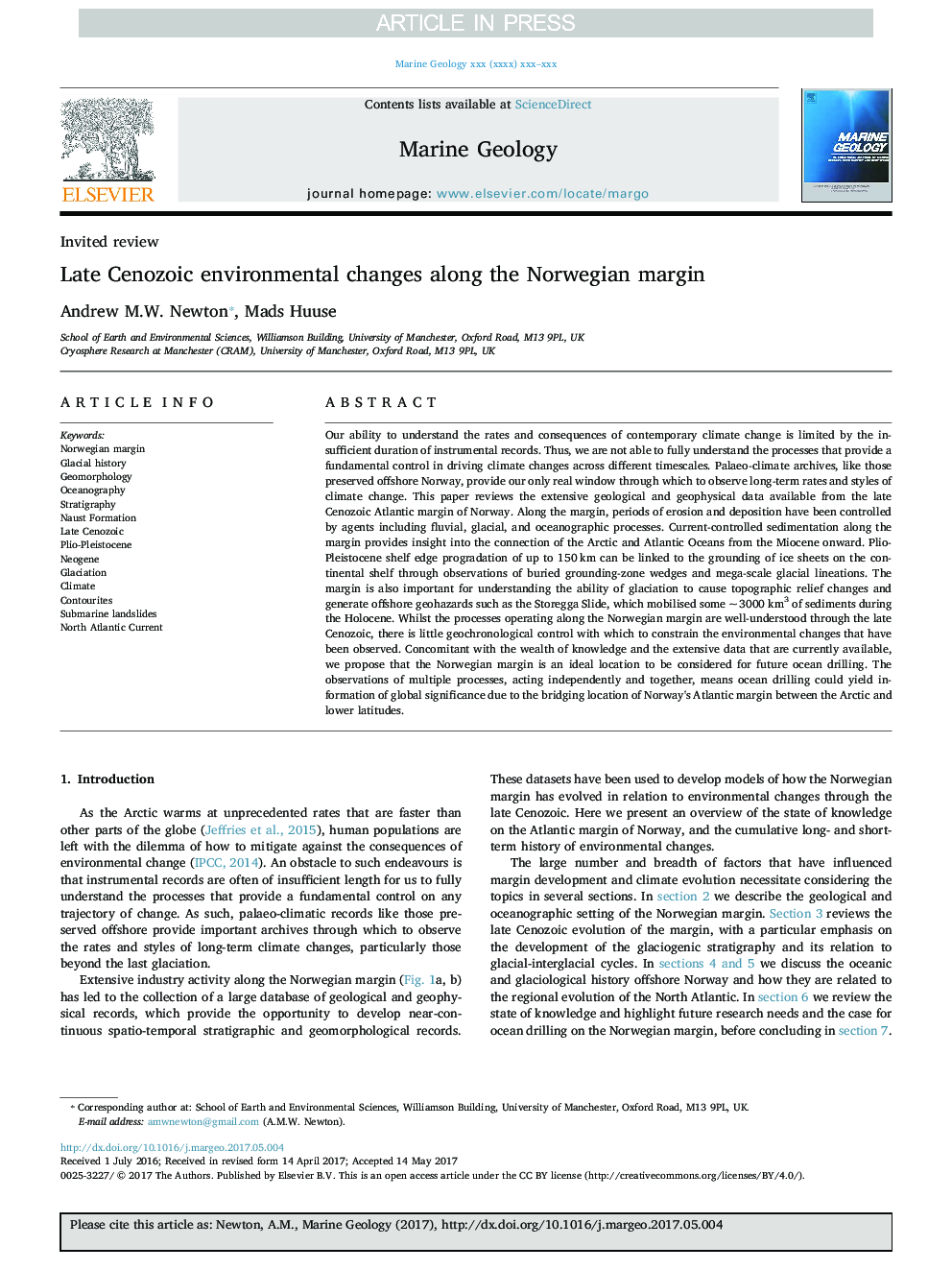| کد مقاله | کد نشریه | سال انتشار | مقاله انگلیسی | نسخه تمام متن |
|---|---|---|---|---|
| 8912101 | 1639059 | 2017 | 29 صفحه PDF | دانلود رایگان |
عنوان انگلیسی مقاله ISI
Late Cenozoic environmental changes along the Norwegian margin
دانلود مقاله + سفارش ترجمه
دانلود مقاله ISI انگلیسی
رایگان برای ایرانیان
کلمات کلیدی
ContouritesClimate - اقلیم North Atlantic Current - اقیانوس آرام شمالیOceanography - اقیانوس شناسیGlacial history - تاریخچه یخبندانNorwegian margin - حاشیه نروژیSubmarine landslides - زمین لغزش های زیردریاییLate Cenozoic - سینوزوئی دیرهنگامNeogene - نئوژنPlio-Pleistocene - پلیو-پلیستوسنStratigraphy - چینه شناسیGeomorphology - ژئومورفولوژیGlaciation - یخبندان
موضوعات مرتبط
مهندسی و علوم پایه
علوم زمین و سیارات
ژئوشیمی و پترولوژی
پیش نمایش صفحه اول مقاله

چکیده انگلیسی
Our ability to understand the rates and consequences of contemporary climate change is limited by the insufficient duration of instrumental records. Thus, we are not able to fully understand the processes that provide a fundamental control in driving climate changes across different timescales. Palaeo-climate archives, like those preserved offshore Norway, provide our only real window through which to observe long-term rates and styles of climate change. This paper reviews the extensive geological and geophysical data available from the late Cenozoic Atlantic margin of Norway. Along the margin, periods of erosion and deposition have been controlled by agents including fluvial, glacial, and oceanographic processes. Current-controlled sedimentation along the margin provides insight into the connection of the Arctic and Atlantic Oceans from the Miocene onward. Plio-Pleistocene shelf edge progradation of up to 150Â km can be linked to the grounding of ice sheets on the continental shelf through observations of buried grounding-zone wedges and mega-scale glacial lineations. The margin is also important for understanding the ability of glaciation to cause topographic relief changes and generate offshore geohazards such as the Storegga Slide, which mobilised some ~Â 3000Â km3 of sediments during the Holocene. Whilst the processes operating along the Norwegian margin are well-understood through the late Cenozoic, there is little geochronological control with which to constrain the environmental changes that have been observed. Concomitant with the wealth of knowledge and the extensive data that are currently available, we propose that the Norwegian margin is an ideal location to be considered for future ocean drilling. The observations of multiple processes, acting independently and together, means ocean drilling could yield information of global significance due to the bridging location of Norway's Atlantic margin between the Arctic and lower latitudes.
ناشر
Database: Elsevier - ScienceDirect (ساینس دایرکت)
Journal: Marine Geology - Volume 393, 1 November 2017, Pages 216-244
Journal: Marine Geology - Volume 393, 1 November 2017, Pages 216-244
نویسندگان
Andrew M.W. Newton, Mads Huuse,